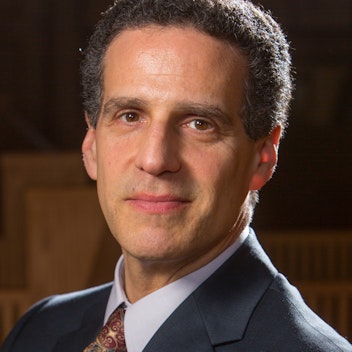Can federalism protect subnational units from national authoritarianism?

An epidemic of democratic backsliding, and a corresponding rise in authoritarianism, has been sweeping the globe, not only among young and weak democracies, but among long-established and seemingly stable ones as well. Some scholars have suggested hopefully that a federal structure can help insulate liberal democracy at the subnational level from the erosion of democracy at the national level. While sympathetic to the sentiment, I am dubious of the conclusion.1
Although federalism clearly contemplates considerable subnational heterogeneity along many dimensions – linguistic, ethnic, religious, cultural, and so forth – it is less clear that federalism contemplates, or can accommodate, a large degree of subnational heterogeneity in fundamental political organization. Montesquieu argued that federalism was a suitable form of organization for constituent units “of the same nature,” and indeed of a particular nature: republics. Nevertheless, a robust line of recent research initiated by Edward Gibson has demonstrated that “authoritarian enclaves” sometimes endure for long periods in federations undergoing democratization at the national level. Perhaps, then, the reverse is also possible: liberal, democratic subunits might endure in a nationally autocratizing federation.
I think such an outcome highly unlikely. A more likely outcome is what we observe in Hong Kong: slow strangulation of subnational liberal democracy by a centrally autocratic state.
In any federation, the capacity of subnational units to resist encroachment from the central state turns on a highly pragmatic issue: the nature and effectiveness of the available pathways by which subnational units may influence national decision making. In a uniformly democratic federation, such pathways might include cooperative measures like representation in a second chamber (as in Germany); institutions of negotiation and consultation (as in Switzerland); or exploitation of political party back channels (as in the U.S.). Available pathways of subnational influence typically also include less cooperative measures such as defiance of national directives; threatened or actual violent resistance; or even the ultimate weapon, secession.
The pertinent question, then, comes down to this: what pathways of influence might be available to a liberal democratic subunit in a nationally authoritarian federal state, and how effective would they be? Answering this question is complicated by the lack of pertinent contemporary examples, but some insight can be gleaned from an examination of the practices of ancient and early modern empires.
Ancient empires tended to be extremely heterogeneous along many dimensions, and were also highly decentralized. Typically, the goals of the imperial center were limited: collect taxes, accumulate recruits for military service, and maintain order. As a result, ancient empires, like the Persian and Roman, were by necessity tolerant of subnational diversity, including diversity of political organization. The Ottoman millet system, under which Jewish, Christian, Armenian, and Kurdish subcommunities were permitted to govern themselves, provided a considerable degree of autonomy to subnational units within the empire.
On the other hand, if we look at the typical tactics of central control in these empires, it seems clear that subnational autonomy was limited in scope. Most ancient empires incorporated newly acquired territory by simply coopting existing local structures and institutions of governance. The main tool of control was clientelism: rulers in newly acquired territories were permitted to maintain their positions, and to continue to rule according to traditional laws, on the condition of becoming client kings or vassals, beholden for their positions to the imperial center. Generally, the real power in the jurisdiction was a centrally appointed procurator or satrap who answered directly to the imperial center, and either commanded imperial troops or could readily summon them. Thus, imperial subunits tended to contain parallel systems of government, side by side, with the imperial one always ready to intervene.
Central empires generally maintained order in acquired provinces by coopting local elites with privileges – local leadership positions, service in the imperial bureaucracy, or in the case of the early Roman empire, Roman citizenship. Imperial centers would often allow local institutions of governance to function, including democratic or representative ones, but as facades, without real power. This, for example, was the tactic employed by the Macedonians after their conquest of Athens, though in the end, they extinguished even the facade of democracy following an Athenian revolt. Finally, imperial governments tended to tighten control over time, possibly a consequence of the telos of empire: center domination of the periphery, for the purpose of extracting benefits for the center.
The bottom line, then, seems to be that ancient empires were happy to grant local autonomy in things that didn’t matter to the imperial center; on other issues, meaningful self-rule was not permitted.
If we turn to early modern empires, such as the Spanish, Portuguese, and British ones, the picture is much the same. Local institutions and laws in acquired territories were generally respected under the principle of aeque principaliter, leading to differentiated legal regimes in which the imperial prince had different authority and privileges in different parts of the empire, and the locals enjoyed differing degrees of autonomy and freedom. In the case of overseas holdings, it was even more necessary to respect local laws and customs due to the difficulty of projecting power over great distances. Nevertheless, intense religious and economic pressures on indigenous peoples tended to acculturate them into settler law and customs, and although some local autonomy may have existed as a practical matter in the interstices of central power, it was viewed by imperial centers as anomalous and temporary.
In such a governance environment, what pathways of influence were available to imperial subunits? First of all, it is clear that pathways of influence readily available in centrally democratic states simply will not exist in an autocratically central state, even one that is federal in structure. There will be no second chamber to represent subnational interests, no independent federal judiciary to check central power, no opposition political parties to offer back-channel access to central lawmaking bodies, nor any free media capable of voicing opposition views. This means that the principal pathways of subnational influence in a centrally autocratic state will be negative tools of resistance and obstinacy – withholding of cooperation, defiance, secession – but with considerably enhanced risk due to the lack of restraint on the central use of violence.
On the other hand, some additional pathways of subunit influence might be gained in the imperial structure. Subnational officials in ancient and early modern empires sometimes were able to appeal to imperial officials by supplication – i.e., begging. Subnational officials might have access to imperial courts. Sometimes they were able to cultivate allies among disaffected members of the imperial ruling class. Bribery seemed to be an available tool of influence in the empires reviewed above, as was negotiation, but only when the center was weak and the subunit had something to trade, most often revenue.
In light of this history, what might be the prospects facing liberal democratic subunits in the United States, such as California, New York, or Massachusetts, if the central government tilts decisively toward authoritarianism? In my opinion, successful resistance for any length of time would be virtually impossible.
Much has changed since earlier ages of empire. First, ancient and early modern states did not view significant substate heterogeneity as inconsistent with the idea of a coherent empire. Modern states, in contrast, have since Bodin presupposed the absolute sovereignty of the state as a whole; and have since Hegel presupposed a coherent Staatsvolk that expresses its character in its constitution, laws, and public customs. These concepts greatly reduce the capacity of a modern autocracy to tolerate any kind of meaningful substate diversity.
Second, the uneven distribution of populist authoritarianism in the United States creates threatening internal tensions that are difficult to manage. At the moment, U.S. authoritarianism is concentrated in particular states, but primarily in the Republican Party. This suggests that in modern states, as in ancient ones, party has the capacity to breach institutional firewalls. As Machiavelli wrote, in a free state there is always some dissatisfied insider willing to let in a hostile outside force. It thus seems to me that, in tactical terms, today’s Republicans in liberal American states are the equivalent of a local aristocracy in earlier times – they form a minority that believes it ought to enjoy more privileges than at present, and is willing to trade local autonomy, democracy, and freedom for those privileges.
In the end, much would depend on exactly what an authoritarian American government wants, and how badly. An unambitious central autocracy that is purely extractive and redistributive, on the Persian or Ottoman models, may not care much about substate autonomy, or push very hard against it. The Trump presidency may have been of this model – mainly kleptocratic. On the other hand, a more ambitious central autocracy motivated by ideology, on the USSR or Chinese models, may be much more insistent. A Trumpista party headed by a smarter, more calculating leader, with a longer attention span, might be able to bring states like California and New York to heel before long if he thought it important enough.
One additional observation might be in order. Lincoln famously declared that “a house divided against itself cannot stand.” This observation has always been understood to mean that a nation half slave and half free cannot survive. But there is another way to look at it: the underlying problem might have been that a nation cannot long survive when it is partly autocratic and partly democratic. If so, then the prospects for a U.S. federation that is politically heterogeneous at the subnational level seem dim at best.

James A. Gardner
James A. Gardner is Bridget and Thomas Black SUNY Distinguished Professor at the State University of New York, University at Buffalo School of Law, where he teaches in the areas of constitutional, government, and election law. His work, which deals largely with issues of constitutional structure and design, focuses on two areas: the law and legal structure of democratic institutions, and the structure and operation in practice of federal forms of governance. In 2012, he held the Fulbright Visiting Research Chair in the Theory and Practice of Constitutionalism and Federalism at McGill University in Montreal, and in 2015 was the Federalism Scholar in Residence at the Institute for Comparative Federalism of Eurac Research in Bolzano/Bozen, Italy. In 2018, he was Visiting Professor at the University of Barcelona. His most recent books are Election Law in the American Political System (3rd ed., Aspen 2023), and Comparative Election Law (Edward Elgar 2022).
Citation
This content is licensed under a Creative Commons Attribution 4.0 International license except for third-party materials or where otherwise noted.









